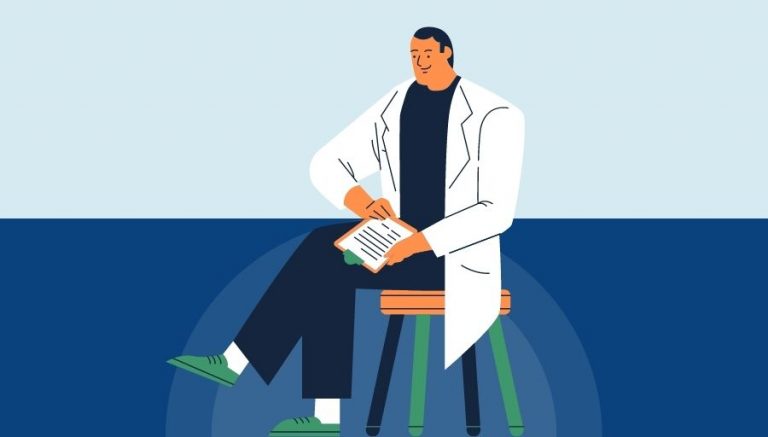How To Use CPT Code 81307
CPT 81307 describes the analysis of the full gene sequence for the partner and localizer of BRCA2 (PALB2) gene. This article will cover the description, procedure, qualifying circumstances, appropriate usage, documentation requirements, billing guidelines, historical information, similar codes and billing examples.
1. What is CPT Code 81307?
CPT 81307 can be used to analyze the entire gene sequence for the PALB2 gene. This code is used when a lab analyst performs the technical lab test on a specimen, such as blood, to determine the presence of mutations in the PALB2 gene.
2. Official Description
The official description of CPT code 81307 is: ‘PALB2 (partner and localizer of BRCA2) (eg, breast and pancreatic cancer) gene analysis; full gene sequence.’
3. Procedure
- The lab analyst performs all technical steps, starting from extracting the nucleic acids from the specimen, to amplifying and stabilizing the quantity of nucleic acid for analysis.
- The lab analyst uses methods such as polymerase chain reaction (PCR) to amplify the PALB2 gene sequence.
- The lab analyst then detects and analyzes the target genes to identify any mutations in the PALB2 gene.
4. Qualifying circumstances
CPT 81307 is typically ordered for patients with a strong family history of breast or pancreatic cancer to evaluate possible autosomal-dominant forms of the disease. It may also be ordered for other clinical conditions possibly related to mutations in the PALB2 gene, such as Fanconi anemia. The PALB2 gene encodes for a tumor suppressor protein, and mutations in this gene may increase the risk of breast, pancreatic, and possibly ovarian cancer.
5. When to use CPT code 81307
CPT code 81307 should be used when a lab analysis is performed to analyze the full gene sequence of the PALB2 gene. It is important to note that this code should not be used for known familial variant analysis of PALB2. Additionally, if the lab performs a gene panel test that includes PALB2, CPT code 81307 should not be reported separately.
6. Documentation requirements
To support a claim for CPT 81307, the documentation should include:
- Indication for the test, such as a strong family history of breast or pancreatic cancer
- Details of the specimen used for analysis
- Methods used for nucleic acid extraction and amplification
- Results of the analysis, including any identified mutations in the PALB2 gene
- Signature of the lab analyst performing the analysis
7. Billing guidelines
When billing for CPT 81307, ensure that the analysis is performed by a lab analyst and that the full gene sequence of PALB2 is analyzed. It is important to note that some payers may separately reimburse for specimen collection using a different code. If the ordering clinician requests physician interpretation of the test and the pathologist provides an interpretation and writes a report, an additional code may be reported with modifier 26. However, the interpretation must be performed by an MD or DO physician, not a PhD laboratory scientist.
8. Historical information
CPT 81307 was added to the Current Procedural Terminology system on January 1, 2020. There have been no updates to the code since its addition.
9. Examples
- A lab analyst performing the analysis of the full gene sequence for the PALB2 gene in a blood specimen from a patient with a strong family history of breast cancer.
- A lab analyst using PCR to amplify the PALB2 gene sequence in a specimen from a patient with suspected Fanconi anemia.
- A lab analyst detecting and analyzing the target genes to identify any mutations in the PALB2 gene in a specimen from a patient with a strong family history of pancreatic cancer.
- A lab analyst performing the analysis of the full gene sequence for the PALB2 gene in a blood specimen from a patient with a clinical condition possibly related to mutations in the PALB2 gene.
- A lab analyst using nucleic acid extraction and amplification methods to analyze the full gene sequence of the PALB2 gene in a specimen from a patient with a suspected autosomal-dominant form of breast cancer.
- A lab analyst performing the analysis of the full gene sequence for the PALB2 gene in a blood specimen from a patient with a strong family history of ovarian cancer.
- A lab analyst using PCR to amplify the PALB2 gene sequence in a specimen from a patient with suspected mutations in the PALB2 gene.
- A lab analyst detecting and analyzing the target genes to identify any mutations in the PALB2 gene in a specimen from a patient with a clinical condition possibly related to PALB2 gene mutations.
- A lab analyst performing the analysis of the full gene sequence for the PALB2 gene in a blood specimen from a patient with a strong family history of breast and pancreatic cancer.
- A lab analyst using nucleic acid extraction and amplification methods to analyze the full gene sequence of the PALB2 gene in a specimen from a patient with suspected PALB2 gene mutations.



